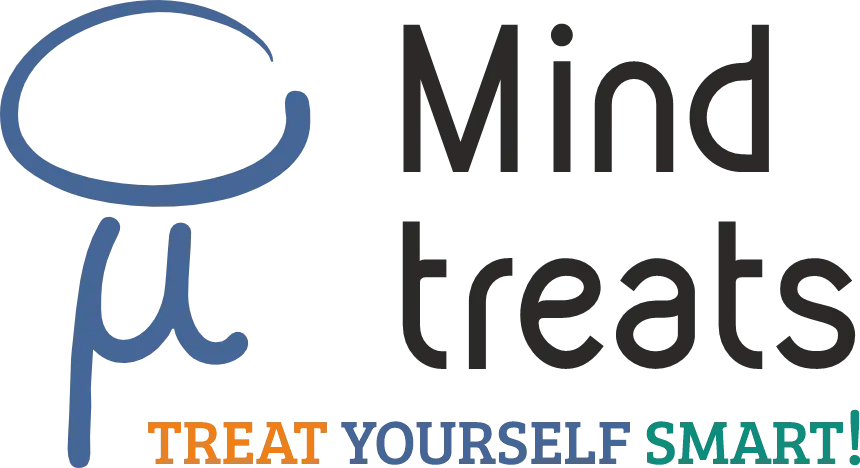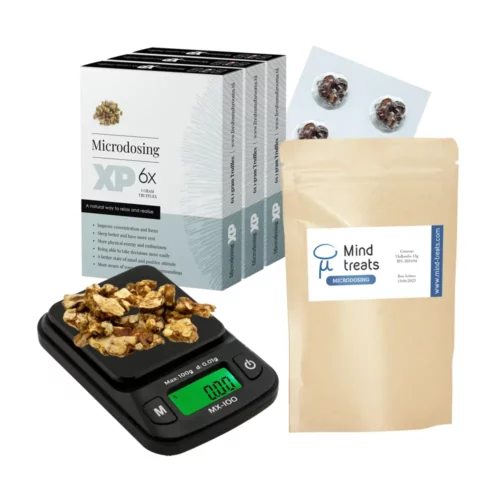Encyclopedia
The Mind Treat encyclopedia is a collection of words and terms that are closely connected to the topics we cover on our website. Microdosing, and the journey it may take you, can be quite scientific and you’ll come across specific words that might need a more “human” explanation. Scientists often use a language beyond conventional understanding or the explanations are missing the link to adaptability and practicality.
Understanding is what makes information valuable to us but understanding how to apply these information turns value into power.
– Mind treats
Information provided on mind-treats serve exclusively for informational and educational purpose and does not guarantee validity, legality, accuracy or correctness. No rights can be derived. Read more [Disclaimer]

A
Addiction
Addiction is a complex condition that results in compulsive behaviour resulting from unsolved trauma. It often establishes itself in toxic habitual behaviour wihich can be an excessive consumption of substances called substance addiction (alcohol, tobacco, pain killer, sugar, etc…) or overcompensation with non-substances called behavioral addiction (gaming and gambling, internet and phone, shopping, OCD, etc…). It can cause a range of physical and psychological symptoms, and can have a serious impact on a person’s health, relationships, and overall well-being.
Autonomic Funtions
Autonomic functions refer to the involuntary processes of the human body that are regulated by the autonomic nervous system. These functions include activities such as heart rate, digestion, respiration, and hormonal regulation. They are typically outside of conscious control and operate automatically to maintain the body’s internal balance.
However, certain autonomic functions can be influenced and partially controlled consciously through techniques such as biofeedback and mindfulness exercises. By increasing self-awareness and using specific mental and physical techniques, individuals can learn to regulate aspects of their autonomic functions. For example, deep breathing exercises can help to slow down heart rate and induce a state of relaxation. Similarly, meditation and visualization techniques can influence blood pressure and promote a sense of calmness.
While conscious control over autonomic functions is limited and varies among individuals, these practices demonstrate the potential to have some influence over these involuntary processes. With practice and training, individuals can develop a greater degree of control and enhance their overall well-being by positively impacting their autonomic functions.
Axon
Axons, or nerve-fibers, are long, slender projections of a neuron that carries nerve impulses away from the cell body towards other neurons or muscles. It is covered in a fatty substance called myelin, which helps to speed up the transmission of signals along the axon. Axons are responsible for transmitting information from one neuron to another, and they can range in length from a few millimeters to over a meter long in some cases.
B
Brain-derived neurotrophic factor (BDNF)
The Brain-Derived Neurotrophic Factor (BDNF) is a protein that plays a crucial role in promoting the growth, development, and maintenance of nerve cells in the brain. It is often referred to as a “brain fertilizer” and is involved in various cognitive functions, such as learning, memory, and mood regulation.
Biohacking
Biohacking is a practice that involves using various tools and techniques to optimize the body’s functions and enhance health and performance. This can involve things like nutrition, exercise, supplements, and other interventions that are designed to promote physical and mental well-being. The purpose of biohacking is to access the human potential that is present in every individual.
C
Cellular Intelligence
Cellular intelligence refers to the ability of individual cells to gather and process information, make decisions, and communicate with other cells to maintain overall bodily functioning, demonstrating the remarkable adaptability and self-regulatory capacity of the human body at the cellular level.
D
Default Mode Network (DMN)
The Default Mode Network (DMN) is a term used in neuroscience and psychology to refer to a specific network of interconnected brain regions that are active when an individual is at rest or not engaged in a specific task. It is often associated with the brain’s internal thought processes, introspection and mind-wandering. The DMN is considered to be a fundamental and intrinsic part of the brain’s functional organization.
Depression
Depression shows itself by loss of interest in daily activities, persistent feelings of sadness and hopelessness. It is often caused by a an accumulation of upsetting or stressful events that haven’t been processed properly. Depressed people often speak about a so-called “downward spiral” that led them into a state of depression. Stressful events include but are not limited to illness, seperation/divorce, finances, abuse, loss, etc… . Depression can be also triggered by more rooted causes like personality traits (e.g. low self-esteem), family history (e.g. parent prone to depression), unprocessed childhood trauma, etc… .
E
F
Frontal Cortex
The frontal cortex is the part of the brain located at the front of the cerebral hemispheres, which are the two halves of the brain. It is responsible for many higher-level cognitive functions, such as decision making, planning, problem-solving, attention, and working memory. It is divided into several areas that are specialized for different tasks, including the prefrontal cortex, which is involved in executive functions such as self-control, goal-setting, and emotion regulation.
G
No entry yet…
H
I
J
No entry yet…
K
No entry yet…
L
M
Metanoia
Metanoia generally refers to a transformative change in one’s way of thinking, beliefs, or behavior, often characterized by a deep and profound shift in perspective. It can involve a radical reorientation of one’s values, identity, or purpose, and may be prompted by a variety of factors such as personal crisis, spiritual experiences, or new information. For example, it could be a personal revelation that causes a person to see things differently and leads to a significant shift in ones perspective or approach to life.
Microdosing Journal
A Microdosing Journal helps you to track the experiences you make in your microdosing journey (thoughts, feelings, perceptions, experiences, etc…). You can log your experiences either digitally or in a simple notebook. You can read how to keep a microdosing journal here.
N
Neurogenesis
Neurogenesis refers to the birth of new neurons, a process that occurs mainly in specific regions of the brain such as the hippocampus. This process of generating new neurons is important for learning, memory, and emotional regulation, and has been shown to play a role in depression and other psychiatric conditions. The study of neurogenesis and its potential to impact brain function and behavior is a rapidly growing field of research, with potential implications for the development of novel treatments for a range of neurological and psychiatric disorders.
Neurons
Neurons are specialized cells in the nervous system that transmit information by electrical and chemical signaling. They are the basic building blocks of the brain and play a critical role in sensory perception, motor control, and cognitive functions such as learning and memory. Neurons consist of three main parts: the cell body, dendrites, and axon, which work together to receive, process, and transmit signals throughout the body.
Neuroplasticity
Neuroplasticity refers to the brain’s ability to change and adapt in response to experiences and learning. This includes changes in the connections between neurons (synapses) as well as changes in the structure and function of neurons themselves. Neuroplasticity allows the brain to continuously adapt and reorganize itself, forming new connections and pathways in response to new information and experiences.
Nuclei
Nuclei, in neuroscience, refer to clusters of nerve cell bodies that are located within the central nervous system. These clusters are typically found deep within the brain and play important roles in controlling various bodily functions such as movement, sensation, and cognition. In addition, certain nuclei are also involved in regulating emotions and behavior.
O
Obsessive-Compulsive-Disorder (OCD)
Obsessive-Compulsive-Disorder (OCD) is a chronic mental health condition characterized by recurring, unwanted, and intrusive thoughts, images, or impulses (obsessions) that are typically accompanied by repetitive behaviors or mental acts (compulsions) that are performed in response to these thoughts or to prevent them from occurring. OCD can interfere with daily life and cause significant distress or impairment. It is believed to result from a combination of genetic, neurobiological, and environmental factors, and it has been associated with abnormalities in the frontal cortex and other brain regions involved in regulating thought and behavior.
P
Polysaccharides
Polysaccharides are big molecules made up of simple sugars stuck together. These molecules are like building blocks that are crucial for many living things, such as plants, fungi, animals, and microorganisms. Polysaccharides have different types, and we can group them based on what they do and how they’re built. They play important roles in how living things work and are put together.
Post Traumatic Stress
Post Traumatic Stress, commonly known as PTS, is a psychological disorder that can develop after experiencing or witnessing a traumatic event. It is characterized by a range of distressing symptoms, including intrusive memories or flashbacks, nightmares, emotional numbness, hyperarousal, and avoidance of triggers associated with the traumatic experience. PTS can significantly impact an individual’s daily functioning and overall quality of life.
Power-Breathing
Power-breathing is an old techinque that was already used by tibetan monks. This technique is a series of deep and continuous breaths paired with breath retention which activates various purposeful functions in the body. It is designed to promote relaxation, reduce stress and enhance physical and mental well being.
Psychosomatic
Psychosomatic refers to the mind-body connection, where emotional or psychological factors can affect physical health and well-being. This term is often used to describe physical symptoms or illnesses that have a psychological or emotional origin, like for example stress-related headaches.
Q
No entry yet…
R
No entry yet…
S
Selective Serotonin Reuptake Inhibitors (SSRIs)
Selective Serotonin Reuptake Inhibitors, or SSRIs, are a class of medications commonly used to treat depression and certain anxiety disorders. They work by increasing the levels of serotonin, a neurotransmitter associated with mood regulation, in the brain. SSRIs can help alleviate symptoms of depression by blocking the reabsorption of serotonin, allowing it to remain in the brain for longer periods.
Self-regulation
Self-regulation refers to the ability of an individual to control or manage their own behavior, emotions, thoughts, and impulses. It involves the capacity to set goals, make decisions, and adapt one’s actions in order to achieve those goals, even in the face of distractions, temptations, or challenging situations. Self-regulation is crucial for maintaining emotional stability, achieving long-term objectives, and making responsible choices. It often involves monitoring one’s own actions (Metacognition), evaluating their consequences, and making adjustments as needed to stay on track or meet personal standards.
Set and Setting
Set and Setting is a term coined by psychedelic researcher Timothy Leary. This idea underscores the significance of your mental state (set) and the physical and social environment (setting) during a psychedelic experience. A positive mindset, including your thoughts, desires, and general mood, significantly impacts the overall trip. Likewise, a secure and comfortable setting, accompanied by trusted friends and a pleasant ambiance, can enhance the trip.
Sympathetic Nervous System
The sympathetic nervous system is part of the autonomic nervous system that activates the body’s “fight-or-flight” response in stressful situations, increasing heart rate, releasing stress hormones, and enhancing alertness and readiness, preparing the body to react swiftly in challenging or dangerous situations.
T
Telomerase
Telomerase is an enzyme that preserves the integrity of our DNA by extending and protecting the telomeres, the caps at the ends of our chromosomes. It consists of an RNA template and a catalytic protein subunit. Telomerase activity is high in stem cells, germ cells, and some cancer cells, allowing them to maintain telomere length and cell replication. In most somatic cells, telomerase activity is low or absent, resulting in gradual telomere shortening with each cell division. This shortening is associated with cellular aging and age-related diseases. Scientists are studying telomerase for its potential role in aging, longevity, and disease, exploring ways to regulate its activity for therapeutic interventions while avoiding uncontrolled cell growth and cancer development.
Telomeres
Telomeres are the protective caps on the ends of chromosomes that shorten as cells divide and age. Shortened telomeres have been associated with aging and age-related diseases, while longer telomeres have been linked to better health outcomes. Science is looking into ways to lengthen telomeres to potentially improve overall health and lifespan.
Triterpenoids
Triterpenoids are a class of naturally occurring organic compounds that belong to the larger group of terpenes. Imagine triterpenoids as building blocks made up of six smaller units called isoprene, and each isoprene has five carbon atoms. So, triterpenoids are like Lego pieces with specific structures. Triterpenoids are widely distributed in nature and can be found in plants, fungi, and some animals. They are known for their diverse biological activities and have been studied for their potential health benefits.
There are several subclasses of triterpenoids, including saponins, steroids, and triterpene acids. Some common examples of triterpenoids include oleanolic acid, ursolic acid, and betulinic acid. The potential health benefits of triterpenoids are attributed to their antioxidant, anti-inflammatory, and other bioactive properties.
U
No entry yet…
V
No entry yet…
W
No entry yet…
X
No entry yet…
Y
No entry yet…
Z
No entry yet…



